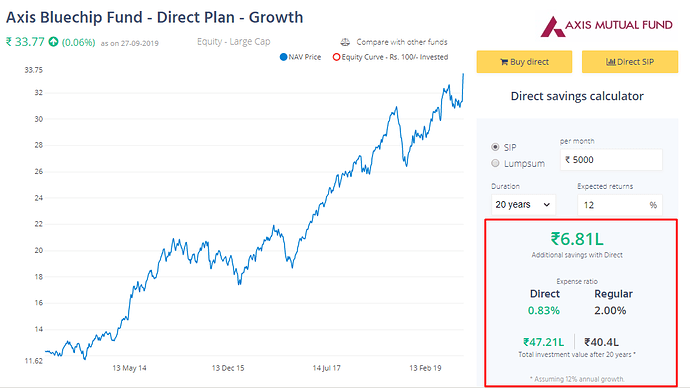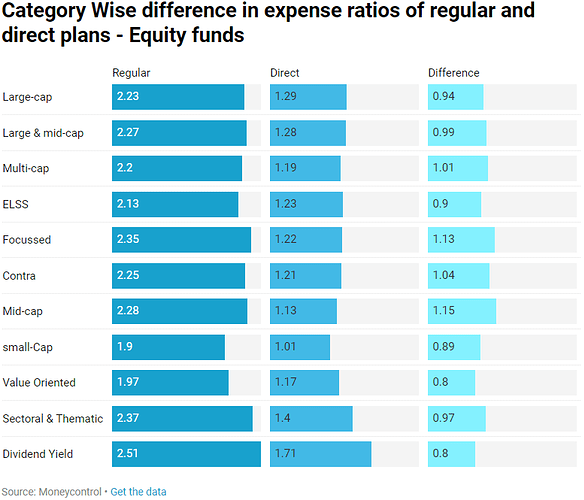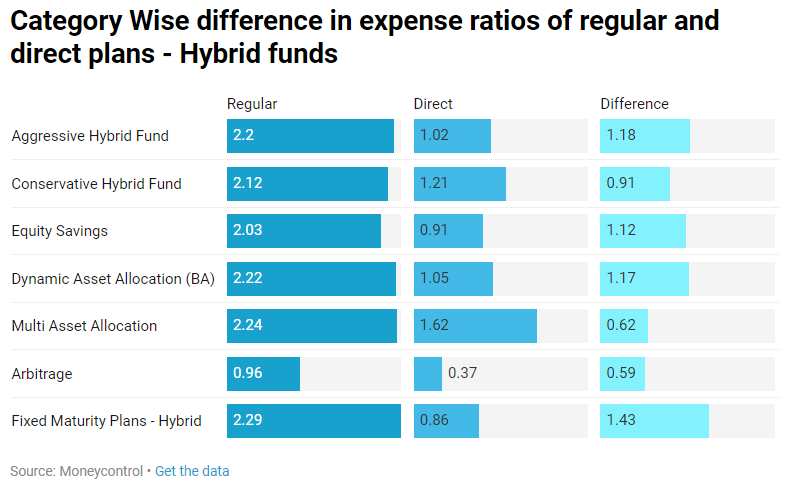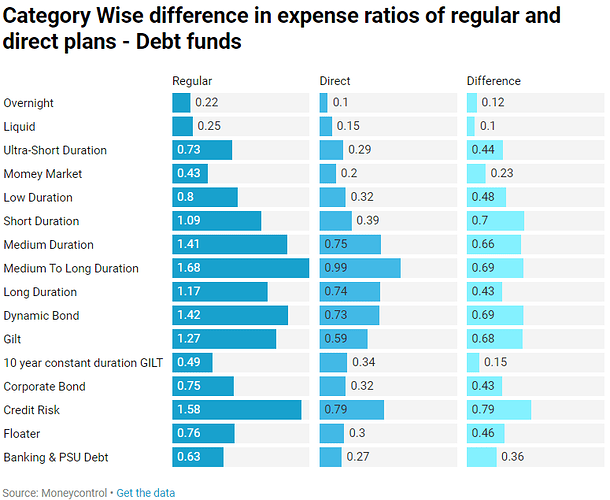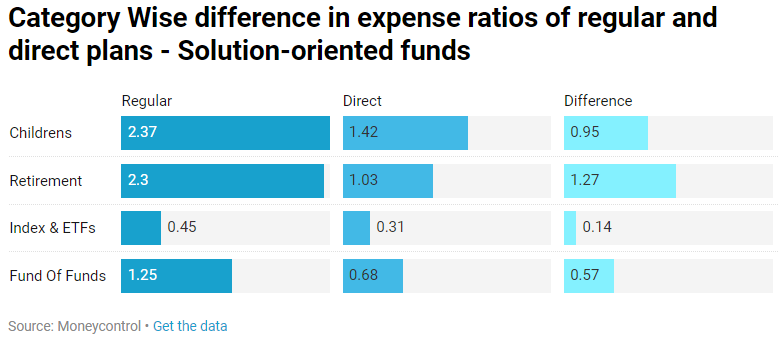Here’s the category wise difference in expense ratios of direct plans and regular plans. Even after the revision in expense ratio slabs by SEBI there are big differences in expense ratios across categories.
When it comes to investing, there are very few things that are in your control. The two big factors you can control that affect your investment outcomes are costs and behaviour. Unfortunately, a vast majority of investors don’t realize the importance of costs. You might think that a difference of 0.94% in the case if large-cap funds seem trivial. But the thing about expense ratios is that they compound over time and the longer your investment period, higher their impact.
One should not let the miracle of long-term compounding of returns be overwhelmed by the tyranny of long-term compounding of costs - Jack Bogle
To give you an example, if you were to invest Rs 5000 a month in this fund for 20 years and if we assume a CAGR of 12%. Your corpus in a direct plan would’ve grown to Rs 47.2 lakhs, while the same investment in a regular plan would be Rs 40.4 lakh. A difference of Rs 6.8 lakhs, that is how much you would have lost in commissions.
Remember, you will keep paying commissions for as long as you are invested. so that seemingly tiny difference of 1.1% can have a massive impact on your final investment corpus. By keeping your costs low, you investment outcomes improve dramatically in the long run.
So, here are the average expense ratios across each category of mutual funds.
All numbers in %
Equity funds
Hybrid funds
Debt funds
##Solution-oriented schemes
A few notes:
- The average expense ratio of index funds might seem a little misleading because the category includes gold ETFs as well. Today, you can invest in an index fund for as low as 0.10%.
- Don’t invest in Children’s plans and Retirement funds, they are poorly managed and are launched just gather AUM.
- Invest in direct plans and consult a fee-only RIA to save costs at the same time getting proper investment advice.
